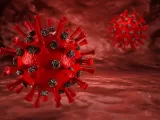
More genetic indicators for hereditary testicular cancer are identified in a new meta-analysis.
July 29, 2021A meta-analysis of over 200,000 males identified 22 additional genomic areas that may be prone to inherited testicular germ cell tumours (TGCTs) – a 40% increase in the number of regions associated with the cancer. The new findings, which were published online in Nature Communications, may aid physicians in determining which men are most at risk of acquiring the condition and alerting them to the need for screening.
Researchers from The international TEsticular CAncer Consortium (TECAC), led by Katherine L. Nathanson, MD, deputy director of Penn’s Abramson Cancer Center and Pearl Basser Professor of BRCA-Related Research at the University of Pennsylvania’s Perelman School of Medicine, conducted the multi-institutional meta-analysis.
TECAC announced the addition of 12 loci in 2017. With the addition of this study, the total number of cases now stands at 78.
“This latest set of genetic loci advances our understanding of the inherited drivers of testicular cancer, which is critical as we work to enhance screening among men who may be at increased risk,” Nathanson said. “While this illness is curable, recognising these men sooner will help them avoid undergoing certain therapies, such as chemotherapy, which can have late and undesirable complications.”
95% of cases of testicular cancer are caused by germ cell tumours. In white men between the ages of 20 and 39, TGCTs are the most common type of cancer in the United States and Europe. Cases among white men and, more lately, Latino men have continued to increase over the last 25 years. Despite substantial evidence that susceptibility to malignant malignancies is inherited, CHEK2 is the only gene with a moderate penetrance in which pathogenic mutations have been connected with an increased risk of cancer.
Genome-wide association studies (GWAS) have proven more successful in finding common genetic variants associated with an increased risk of disease. The method was developed by Nathanson and TECAC researchers to identify regions on chromosomes called loci that contain variations associated with an elevated risk of germ cell cancers.
In the most recent study, TECAC researchers evaluated genetic data from 10,156 cases of testicular germ cell tumours and 179,683 controls in the biggest genome-wide association study (GWAS) of TGCT to date.
22 new loci were discovered during the course of the study. Taken collectively, the findings account for 44% of the father-to-son familial risk for testicular cancer, according to the scientists. Men with a high polygenic risk score (95th percentile) had a 6.8-fold greater illness risk compared to men with a median polygenic risk score.
Apart from establishing the statistical importance of the additional loci, the study established two important biological mechanisms associated with disease susceptibility: male germ cell development and chromosomal segregation during cell division. When any of these pathways malfunction, TGCT tumorigenesis results.
“Our findings contribute to a better knowledge of the genetic architecture of TGCT, to a better understanding of the biology of male germ cell development, and to the identification of biological pathways that are unique to TGCT,” the scientists said. “Most importantly, we have produced a polygenic risk score that identifies guys at the greatest risk of disease. This score could potentially be applied to men with other risk factors, such as [undescended testes] or infertility, to target them for early detection and disease mitigation.”
Following that, researchers will examine the increase in TGCT cases among Latino males and see whether the genetic variations identified in predominantly white men are also present in that population.
Reference:
Pluta, J., Pyle, L. C., Nead, K. T., Wilf, R., Li, M., Mitra, N., … & Nathanson, K. L. (2021). Identification of 22 susceptibility loci associated with testicular germ cell tumors. Nature communications, 12(1), 1-13.


